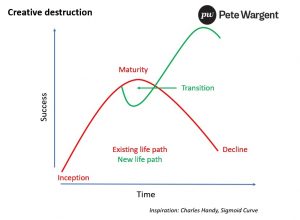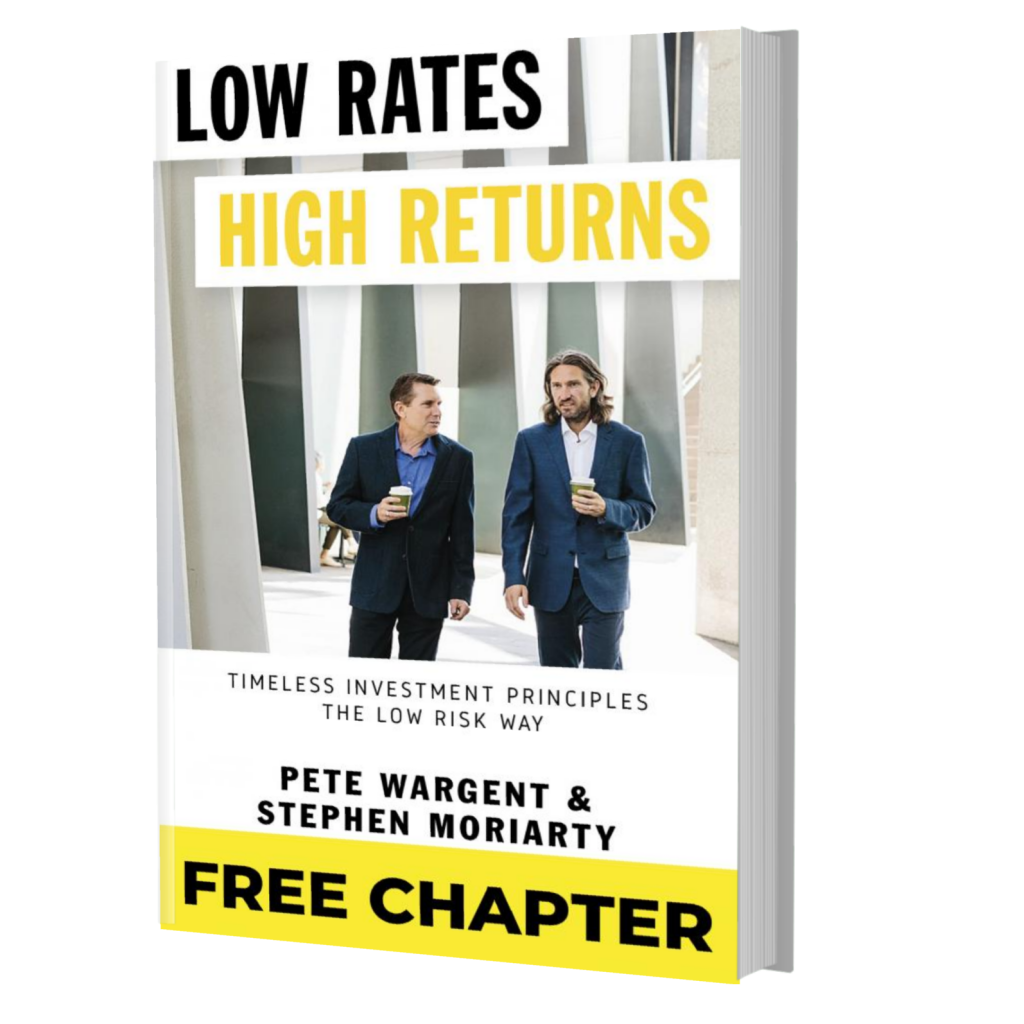Appetite for destruction
When I trained as an accountant a handful of our clients still maintained their records in a handwritten ledger, whereas today you can scan a receipt into your phone and post an according book entry in real time.
Some things don’t change so easily – I’m still typing this listening to Guns N’ Roses, for example – but the bludgeoning chords are now coming via i-Tunes rather than a tinny-sounding cassette tape.
The new technology is way better than the dated stuff, capitalism continues to revitalise and reinvent, and the world moves on apace.
Schumpeter’s gale
The concept of Schumpeter’s gale or creative destruction holds that industries and economies will mutate until new products and structures replace the old.
This can create short-term problems such as localised unemployment as businesses, jobs, and skills become obsolete, but change is relentless and most economists accept that this is inevitable, and even necessary for development.
While industries shouldn’t be propped up artificially, some forms of enterprise are considered more integral than others.
Recently the dying embers of the car manufacturing industry generated much debate in Australia, while traditional print newspapers are rapidly being replaced by online media, but our major banks are now deemed to be too big and too vital to be allowed to fail.
Embracing change
At the individual level we need to embrace change, for it will continue whether we like it or otherwise, and this will require shifts in your your career plans or business over time.
I’m not a bad case study myself: from accountancy to the mining industry through the resources heyday (exiting a few years too early, in hindsight), and into the real estate sector before its most recent cyclical boom.
I’ll always be a real estate investor, because it’s what I’m good at, but the industry has seen the supply of labour overtake demand, and it’s likely to be a soggy year or two ahead for some agents.
Some of the industries I see thriving next include knowledge, coaching, and other personal or entrepreneurial services.
A model for constant growth
If your current business, career, or life path appears set to reach a point of maturity – or even if not! – then although change can be painful, a period of transition (or sigmoid moment) may be required to fire you up to the next level.

While all people and businesses have a life cycle, the good news is that there’s life beyond the curve; the trick is to embrace new ideas before current strategies begin to flounder.
While the above diagram isn’t mean to be taken literally, the second curve for you might represent new strategies, an innovative product, or an advanced method of operating…and, perhaps essentially, working with different people.
The power of the pivot
Recognising that development will continue, either evolving imperceptibly or dramatically, here are 4 proven ways to cope with Schumpeter’s gale of creative destruction:
(i) Growth mindset – if you don’t believe you can grow or improve, then you’ll lack the resilience to embrace new ideas;
(ii) Willingness to train/retrain – new innovation may require updating your skills;
(iii) Be curious – it’s smart to be prudent and sceptical, but also to be inventive and curious; and
(iv) Engaging in lifelong learning – endeavour to pick up new skill-sets, including technological competence, to broaden your horizons.
Remember, while transformation can be scary, each development brings new opportunities to thrive and be a leader.
And to conclude on an inspirational note, consider how challenging life might be for those that achieved spiralling success when they were young, only to fail to pivot.
You have the opportunity to build on your existing network and skills, so grasp it.





